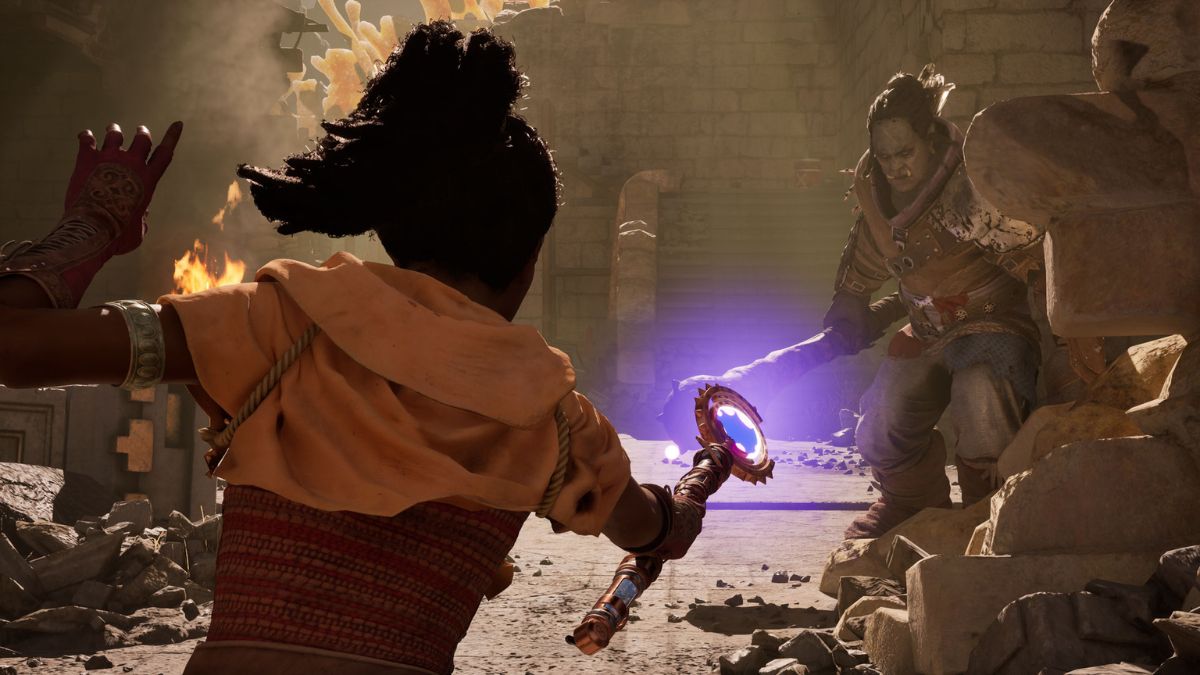I really do wish Citizen Sleeper 2: Starward Vector was as good as the original Citizen Sleeper, and while there’s a lot to love, it just didn’t grab me in the same way as the original.
Citizen Sleeper 2’s Writing Is Great
In Citizen Sleeper 2, players take on the role of a Sleeper, which is essentially an android, as they attempt from a crime lord named Laine. Along the way, they’re joined by a bunch of interesting and eclectic characters to help them navigate an area known as The Belt and earn their freedom once and for all.
The writing and characters in Citizen Sleeper 2 are absolutely sublime. Everyone you encounter feels well fleshed out and multidimensional. Characters act in ways that can be frustrating, but also at the same time entirely realistically. They have goals, and they’re aiming to accomplish them. They also have relationships with other characters, and it’s interesting to see everyone playing off each other. That all adds up to make The Belt feel sort of like a small town, despite its massive size.
As for the story itself, Citizen Sleeper 2 really focuses on themes of transformation, as well as what it means to be alive and experience the world. I found the story a bit more linear than the original Citizen Sleeper, but the ending is an absolutely fantastic synthesis of the various plot threads and themes present.
Contracts Aren’t Great
Where Citizen Sleeper 2 struggles is in its execution. Gameplay consists of players getting several dice at the start of every “Cycle,” what essentially amounts to an in-game day. Players then use these dice to perform certain actions, which are then modified by various ability scores, difficulty modifiers, and other factors. You’ll often have various “clocks” that you have to fill, though in some cases you’ll have to finish actions before another clock finishes. Think Blades in the Dark, but in space.
Depending on how things are going, you can accumulate Stress, which damages and sometimes destroys dice. You can also get “glitched” dice, which have a flat 20 percent chance of a positive outcome and an 80 percent chance of a negative outcome. There are also various other things to manage, like making sure your ship has enough Fuel to fly from place to place, parts to repair you when you’re hurt, and Supplies that you can eat.
Citizen Sleeper used basically the same system as Citizen Sleeper 2 and was a remarkably tight and addictive game. I finished my first run in one sitting. By the end, my eyes hurt. Badly. It was, without a doubt, worth it. The pacing was immaculate, and I always wanted to keep going.
I found it a struggle to play Citizen Sleeper 2 for more than an hour at a time, and the longer as session went, the more disinterested in the game I became. I’m not even entirely sure of why. Something about the pacing didn’t impel me forward. I think it, at least partially, is due to how stories and plots are often very location specific, meaning that when you finish with one, it’s easy to close the game down and walk away for the day.
At the same time, Citizen Sleeper 2 lacks a sense of urgency in its general exploration. There are, initially at least, countdowns that you have to pay attention to, but because of how small the locations were, I never really found it difficult to avoid failing on those clocks.
If general exploration lacks urgency in Citizen Sleeper 2, though, the game’s Contracts are the exact opposite — and not for the better.
Contracts are basically missions that take place in areas that are only open for a limited time. On a Contract, you’ll bring along two crew members to help deal with challenges, which is a nice way to get around your character lacking a certain skill set. Within that, there are essentially two types of Contracts. One will have a countdown, at the end of which something will happen. Whatever happens will generally result in you failing the mission in some way. The other type doesn’t have that same countdown.
Every Cycle you pass on a Contract will reduce your Supplies by one. While playing, I only ever had five Supplies . After that, any new Cycle causes Stress, which then leads to glitched die. This ends up causing a pretty major problem for the Contracts.
The lack of Supplies impacts a lot of different systems in Citizen Sleeper 2, resulting in some pretty major disharmony. There’s no good way that I found to figure out what skills a Contract might require, meaning that it’s a bit of gamble when you’re choosing crew members to accompany you. You can easily end up with someone who isn’t helpful in a particular situation. That means it’s much, much harder to finish within the five turns the Supplies problem creates.
One of the key conceits of Citizen Sleeper 2 is that you get a set of die and you have to figure out how to use them. That’s the same for Contracts. However, because of the Supplies limit, having a useless crew member or even just bad luck on one or two Cycles can lead to a really vicious and frustrating cascade of failures. If you exhaust or give one of your crew members too much Stress, they won’t be able to act anymore, impeding your ability to finish in a timely manner. If you don’t use them because you don’t want to add Stress, you’ll end up running out of time before you run out of Supply.
Once on a Contract, you also can’t leave the area until you’ve either completed or failed the mission. This led to scenarios in which I was essentially soft-locked without being actually soft-locked. With all my dice broken, I only had one glitched die remaining. I’d then have to use that 20 percent chance to move along whatever clock remained to complete the mission so that I could leave. This sometimes took a dozen Cycles, depending on just how lucky I was.
Meanwhile, every time I didn’t finish that Clock, I’d have to end the Cycle. This resulted in me taking more stress, and thus risking more glitches. Since there’s no consistent way to repair glitches, that meant I ended up with fewer dice for the rest of the game. Getting caught in that loop felt was deeply frustrating in and of itself, but it was made more so through the knowledge those failures would affect everything else I did.
As the game went on, I found myself better able to handle the Contracts, but even then, there were times where failure felt much less like the result of any choices I’d made, good or bad, and more the result of random chance rubbing against systems that constantly asked me to do things at the quickest possible speed.
Overall, I found the Contracts system in Citizen Sleeper 2 really frustrating. I don’t mind failing, but getting caught in a failure loop that affected the game felt unfair.
What made the Contracts even more baffling to me is that Citizen Sleeper 2‘s gameplay while exploring The Belt is perfectly fine! It’s like the original. The Contracts are a baffling fumble that takes up way too much gameplay time. The Contracts system just doesn’t work well in its current form.
Citizen Sleeper 2 Has Beautiful Design
I really do like the art direction in Citizen Sleeper 2. Putting aside the excellent sound design, which always feels exactly right, the actual visuals are wonderful. Characters are wonderfully maximalist, and at the same time are unique and identifiable. Every detail in the art design feels like it contributes to both the overall world of Citizen Sleeper 2 and the characterization of the people you meet there.
Verdict: Recommended
Overall, I love a lot of Citizen Sleeper 2, in large part because the writing and characters are great. I don’t regret my time with it in the least, and if you’re a fan of sci-fi, it’s worth a try. However, the Contracts system and pacing problems really do bring the game down in a pretty profound way. If you’re looking for a story as good as the original, you won’t want to pass on Citizen Sleeper 2, but if that game didn’t capture you, I don’t think Starward Vector will sell you on the series.
Citizen Sleeper 2: Starward Vector releases Jan. 31 on PC, Xbox, PS5, and Nintendo Switch. A review code was provided by the publisher.














Published: Jan 30, 2025 6:05 PM UTC